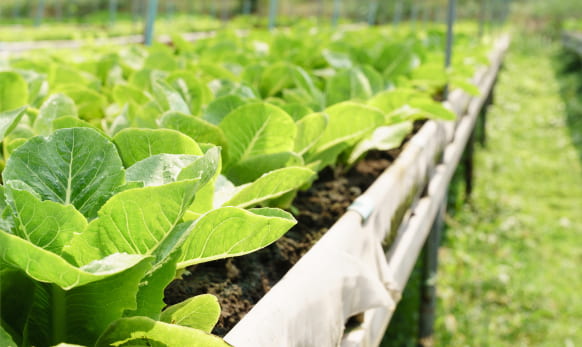Flexibility and creativity have been the name of the game in child nutrition in the last couple of years. The challenges that you have faced as a K‑12 nutrition program director have been unprecedented. Yet, with the help of your team, you have kept your program running and made sure that students get what they need – nutritious meals to fuel their brains for the learning day ahead.
Now, with the USDA’s expansion of farm to school grants, there will be funding to help take your child nutrition program to the next level. The USDA is making an effort to support greater access to locally sourced foods. The agency will be awarding more than $70 million toward the development of farm to school programs. It can be overwhelming to know how to put those dollars to good us. It’s also important to understand how exactly a farm to school program can benefit your district. Here we’ve listed three benefits that your district can gain, along with some ideas about how to implement them.
3 Benefits of Farm to School Programs
Benefit 1 – Increased K‑12 Nutrition Program Participation
Research has shown that districts with farm to school programs experience an increase in participation in their nutrition program. With more nutritious options, health-conscious parents are more likely to allow their kids to eat school meals. Additionally, a farm to school program offers exposure and education to students and families who aren’t as familiar with local food sources.
How to Implement:
- Serve local produce at meals and during snack time.
- Offer students and families the opportunity to taste test foods from local farmers.
Benefit 2 – Hands-on Agricultural Education
Hands-on learning is the best type of experience to offer students. When their learning is relevant to their lives, and they have a personal experience with it, it’s far more likely they’ll remember it for a long time. Having a farm to school program gives students, staff, and even families the opportunity for hands-on learning about local food systems and agriculture. Not only is this a great way to bolster your district curriculum, but students will learn a valuable life skill that could one day be used in their career. After all, the world will always need farmers and agriculture professionals.
How to Implement:
- Invite local farmers and grocers to teach cooking classes.
- Grow a school garden with each grade level contributing.
Benefit 3 – Support Your Local Economy
Schools are a community on their own, but they are also part of the larger community in which they are located. Collaboration with local farmers and grocers is a great way to support the local economy by providing business to community farms. These businesses can also support your district’s efforts to improve student health and really establish your farm to school program. Additionally, as students, staff, and families learn more about natural foods, they may choose to seek out produce and other products that are from local farms when they do their regular grocery shopping. It’s a win for everyone!
How to Implement:
- Purchase produce and other products directly from local farms.
- Establish a collaborative partnership in which local farmers and grocers can come into the school to educate students, staff, and families about their food systems.
Stay in Touch with Our Team of Experts
Understanding the benefits of the USDA’s farm to school grants is just one of the things you will need to learn about this school year. In addition to increasing your K‑12 nutrition program participation, providing your students with a hands-on educational experience, and bolstering your local economy, there will be many more benefits that we uncover as the funding is rolled out and districts put their plans into action. Our team is here to help! Stay in touch with us by signing up to receive regular updates directly to your inbox.
